|
Frontpage
Climate, Weather and best time for the holidays
The climate of Costa Rica is characterized by considerable
differences in altitude.
Across the country, from northwest to southeast, runs a
mountain chain, which also forms a weather divide between
the Pacific and Caribbean coast.
While up to 700 meters with an average temperature of 24 -
27 ° C . For example in the central highlands
around the capital city San José (1150 m asl) in the annual
mean 20 ° C.
By contrast, the thermometer reaches above 3000 m above sea
level
rarely 10 ° C
The country can be visited throughout the year without any
problems. From December to May is the dry season in Costa
Rica.
You can expect mostly sunny weather, which also has an effect on
prices (high season).
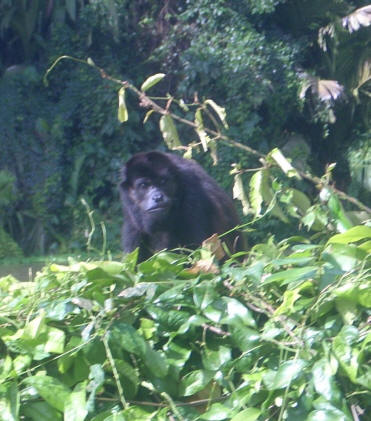
Activities for travelers.
To travel great distances without having to, is a quaint
in Costa Rica, many ways to make the best
weeks of the year a memorable one.
Costa Rica is a country mainly for nature lovers.
Hiking, trekking and mountaineering
Costa Rica has numerous national parks and nature reserves,
many of them offer visitors hiking trails.
Dense rain forests, dry forests, beautiful coastline or
climb the (extinct) volcanoes, perhaps even to Costa Rica's
highest peak at Cerro Chirripo. lRiding and mountain
biking
Especially the wild south of the Nicoya Peninsula is a
holiday in the saddle - whether on horseback or mountain
bike -
Swimming and water
sports.
Relaxing beach days in the numerous stunningly beautiful
and often pristine beaches of the 1,000 km coastline should
be scheduled in a
trip to Costa Rica.
Active on world-famous surf spots in Costa Rica,
great diving and adventurous whitewater trips.
Wildlife viewing
The different species can be easily observed in Costa Rica
in the wild: toucans with their huge, colorful beak,
pull-through monkey families, or even sloths in the trees,
iguanas of varying size and curious coatis on land or
caimans at or in the rivers and beautiful butterflies in
the air.
Bird Watching in Costa Rica, written large, particularly
suitable for this purpose are the Braulio Carrillo National
Park, Monteverde, Talamanca, and the Osa Peninsula.An
unforgettable highlight is the 'arribadas' of the marine
turtles.
Both the Atlantic and the Pacific Ocean beaches have
them more than once a year, the arrival and egg-laying at close
quarters.
Partial come at the same time in one night, several thousand
on land.
Especially popular beaches are Tortuguero on the Caribbean
side and Playa Ostional and Playa Grande on the Pacific side
of Costa Rica.
The main international airport of Costa Rica, San José (SJO,
Juan Santamaria) is about 18 km from the city center.
The other international airport is nearby
the capital of Guanacaste, Liberia (LIR).
Domestic airports are spread across the country.
There exist many domestic flights to all regions of the
country, many of them at tourist sites such as Quepos,
Golfito, Samara, Tortuguero, etc.
We fly with SANSA or NATURE AIR.
The two major shipping ports are Caldera in Puntarenas on the Pacific side (cruise ships) and Limon on the
Caribbean side (mainly cargo ships).
Some ferries connecting Puntarenas with the Nicoya
Peninsula.
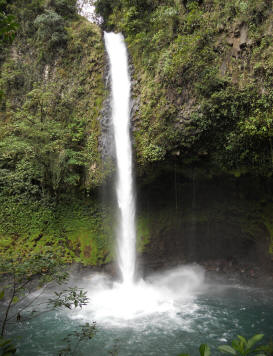
The public bus network is good and reasonably priced, and it
extends radially from San José. All over the
buses sometimes do not necessarily belong to the latest
generation.
Across the country, from Nicaragua to the north-west to
Panama in the south, leads the Panamericana.
With your own car is traveling in Costa Rica, of course, a
lot more comfortable and more independent.
During the rainy season a four-wheel car is
recommendable to
rent, also in the remaining time of the year, this is not
absolutely necessary, but provides the basis of the
sometimes poor road conditions.
For visitors there are no mandatory vaccinations in Costa
Rica.
Recommended, however, is hepatitis A and DTP. Here you should
check with the Tropical Institute.
The water has mostly drinking water quality.
Only in very remote areas, one should inquire if the
water is drinkable.
The official currency of Costa Rica is the colon / colones.
This is strongly dependent on the U.S. dollar, up to date
01.04.2013 corresponds to approximately 500 CRC for 1 US$.
Compared with the rest of
Latin America, Costa
Rica is not a
cheap travel destination, but
it has one
of
the highest
standard of living in the region.
USD cash can
be exchanged
at all banks and many
hotels. Major credit
cards (Visa /
MasterCard / AMEX)
and U.S. dollar
traveler's checks are
accepted. All over the land are ATM´s.
Language
The official language is
Spanish in Costa
Rica, on the Caribbean
coast and in the tourist
areas, English is
spoken.
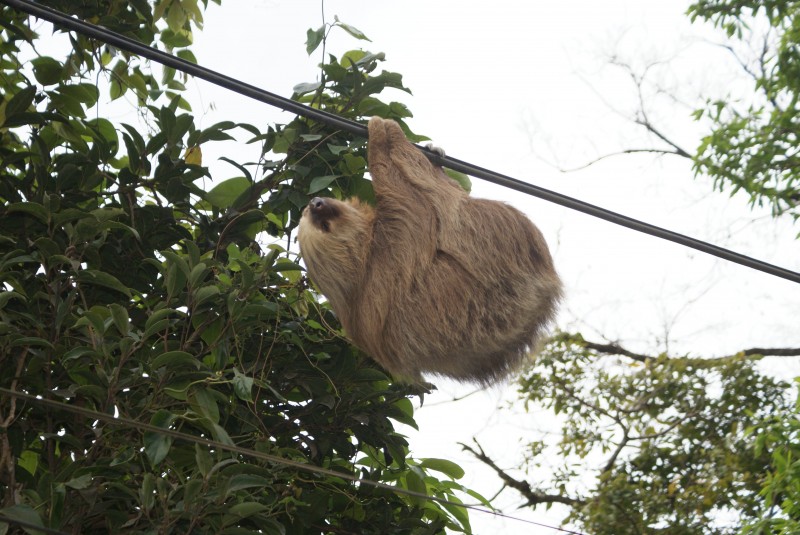
Form of government,
and history.
The country is the
oldest democracy in Latin
America since
November 1949 the democratic
constitution was adopted.
The President, Vice-President
and Members of Parliament
from Costa Rica
are elected every four
years by direct vote.
Costa Rica
abolished the army
in 1948 and used the
funds thus saved
for a systematic
expansion of the education and
health.
Its neutrality
amid in a troubled region
brought the country
known as the "Switzerland of Central
America".
A positive consequence of
this policy is an
undeniably high
quality of life in Costa
Rica,
which manifests itself with a
high life
expectancy and a good
standard of education.
The economy is currently
in transition:
include the traditional
export crops such as
bananas and coffee,
are
still among the largest foreign exchange
earner of the country,
but the tourism
sector is
steadily on the rise.
Here, the government
attaches great importance to
environmental compatibility. The inhabitants are
well aware of their
natural resources and
have at least
about 25% of its
land area under
protection, so that
Costa Rica
can come up with
a large number
of national parks and
private
nature reserves.
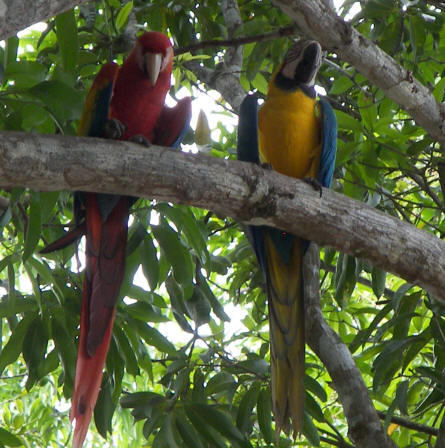
Culture,
Religion and People
95% of the population of Costa Rica are of European descent, 5% Asians, Indians
and blacks.
In Costa Rica there is freedom of belief, the majority of the population are
Catholics.
The Ticos, as the residents call themselves, are very hospitable, very neat and
fashionable.
Costa Rica is the richest country in the region and the people are very friendly
and helpful.
But the fact is that this increases the crime rate.
The majority of thefts are crimes committed against tourists, often on beaches
and from unattended cars. Especially in San Jose pickpocketing in
crowded places take place.
It is recommended that valuables be kept unobtrusively on the baggage and to keep
always a watchful eye.
Almost certainly you will encounter on your trip to Costa Rica no snakes, but a
few precautions do not harm against snakebites.
This primarily involves the wearing of sturdy shoes in the wild.
Also,
scorpions and poisonous spiders are found in Costa Rica.
Whose sting or bite is for the (healthy) people not life threatening,
but painful.
Therefore: always before putting on the clothes and shoes controll them
Food and Accommodation
Admittedly, the tourism multinationals discovered in recent years, Costa Rica
and a few large, built all-Inclusive plants, but mainly the overnight
accommodations are more tailored to individual tourists: medium to small hotels
of all categories with a restaurant, Cabinas' called
small bungalows in all price ranges and, bed-and-Breakfast' accommodations can
now be found abundantly throughout the country.
Although the international cuisine in Costa Rica has found its way, are rice and
beans still an important staple food and is served practically every
meal: for breakfast "Gallo Pinto", for lunch, along with meat, fish or chicken, as "Casado".
Fresh vegetables and fruits (bananas or mangoes) are available year round on
the market.
Among the restaurants there are "sodas" an inexpensive alternative.
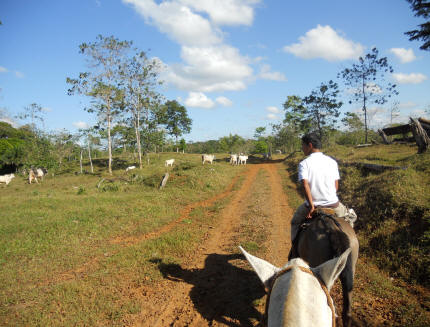
Flora
and
fauna
The divers
ecological
zones
and microclimates
in Costa
Rica
offer
many
different animal
and plant
species.
On vegetation,
the climate
differences
in
Costa Rica
have a great influence.
The
Pacific and Caribbean
lowlands
are covered
by tropical
rain
forest.
In the extreme
northwestern
Guanacaste
prevail
on the other hand
dry forest
and
savanna
areas,
which
thrive
in
even
cacti.
Tropical
mountain rain
forests
are
found in
Costa
Rica
as well as
sub-alpine
vegetation
above the
tree line.
Costa
Rica can
refer
to exactly
1228 km
coastline,
of which accounted for
the pacific
coast of
1016 km.
While the
Caribbean coast
is
divided
in
mangrove
swamps
and
sandy
beach,
the
Pacific side
is
very
varied, with
sandy
beaches
in many different
color
variations,
barrier islands,
estuaries and
steep banks.
wildlife
Over 200
species of mammals,
850 bird
species,
over 420
amphibians and reptiles
are native in
Costa
Rica.
The world of
insects
and
invertebrates
is enormous:
there are
only
1300 different
species of butterflies,
of which the best
known probably the
blue
Morpho
is.
More
than 500
km from the
mainland
of Costa
Rica
lies
the
nature reserve of
Isla
de
Coco
in the Pacific.
Because of its
isolation
it could
develop an independent
animal
and plant life
that inspires
researchers
worldwide.
Remarkable
Virtually everywhere in
Costa Rica has
access to the Internet,
in every major
city there are
Internet cafes.
The voltage is 110
V, European
appliances plug
will only fit with
adapters.
The time difference from
GMT is -7
hours, in the
European Summer
Time [BST]:
-8 hours.
Holidays
First January, 19
March, Maundy Thursday,
Good Friday, 11 April, 1
May, Corpus Christi, 29
June, 25 July, 2
August, 15 August, 15
September, 12th October,
25 December.
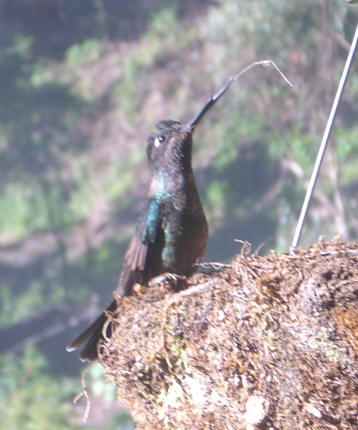
|
|



